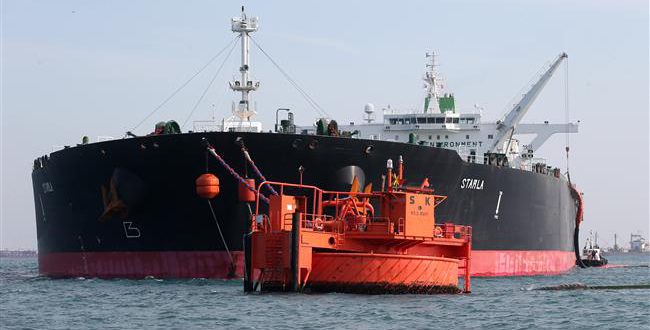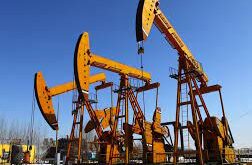Are the oil markets getting back into the summer 2008 mode? If the signals are being interpreted correctly. the possibility of a spike – and then indeed a sharp slump – cannot be ruled out.
In summer 2008. crude touched the peak of $147 a barrel. The then Saudi oil minister Ali Al-Naimi and his colleagues blamed market speculators for the spike. while the US Energy Secretary and his Organization for Economic Co-operation and Development (OECD) colleagues’ referred to the supply crunch as the real issue.
The scenario is not much different today. Yet. the culprit is different.
The major unknown in the global crude demand-supply equation today is Iran and its crude exports in the coming months. Markets are worried. the embargo on Iranian crude exports would be much harsher than before. And its impact would create havoc in the markets.
When in May. President Trump announced plans to reimpose sanctions on Iran’s oil exports. pundits felt. the output would go down by about 300.000 to 700.000 barrels per day (bpd). However. with the US being “incredibly serious“ about its measures. the consensus has moved to as much as 1.5mbpd decline in Iranian output. Ben Luckock of Trafigura Group told the recently held S&.P Global Platts Asia Pacific Petroleum Conference (APPEC).
Iran’s production “is going to be significantly less than it was. and probably lower than expected when the sanctions were announced.“ Luckock emphasised. His oil price projection hence was $90 by Christmas and $100 barrel in early 2019.
“The market does not have the supply response for a potential disappearance of 2mbpd in the fourth quarter.“ Mercuria Energy Group Ltd co-founder Daniel Jaeggi told the APPEC. “In my view. that makes it conceivable to see a price spike north of $100 a barrel.“
Sanctions against Iran could contribute to a “nasty gap“ in the market at year-end. with oil prices potentially reaching $100 barrel. but probably not for a prolonged period. Standard Chartered bank’s Paul Horsnell told S&.P Global Platts last week.
In a note to clients early last week. Francisco Blanch of Bank of America Corp. said. “the likelihood of an oil spike and crash scenario akin to the one observed in 2008 has increased.“
“Balances are precarious and the lack of spare capacity could see crude pricing well above $90 or even $100. should all of the potential risk in the market materialize.“ industry veteran Ed Morse of Citi said in the note.
JP Morgan expects Brent Crude to hit $85 a barrel over the next six months – with a spike to $90 likely. The investment bank now sees the US sanctions cutting Iran’s oil exports by 1.5mbpd.
The market will lose “well over 1mbpd“ from Iran with the sanctions. and “that can’t be made up.“ John Kilduff of Again Capital told CNBC. expecting WTI Crude prices at the end of this year at $85 to $90. and Brent Crude at $95 to $100.
RBC Capital Market expects the losses of Iranian oil to exceed 1.2mbpd in the first quarter of 2019. and Iran’s reaction to the US sanctions in November could lead to some sort of “unintended military escalation.“ which the markets are currently not taking much into consideration.
Yet. summer 2008 was followed by winter 2008. Within those six months. prices tumbled to $36.20. Could it be the same today? Yes. it could be.
The deepening trade war between the US and China threatens economic growth in Asia and turmoil in emerging countries could amplify the impact of higher prices on global demand growth. Strong dollar. higher debt levels in emerging markets and capital flight from these markets due to the rising interest rates. US corporate tax cuts and the US tariffs. mean that “significant oil demand destruction could follow. if Brent crude oil spikes above $120 bbl.“ Bank of America Merrill Lynch is saying.
Summer 2008. changed the global energy topography. The shale oil factor came into play because of high prices. most know.
Today. Saudi Arabia and partners may quietly be getting ready to add extra oil to the market. yet are cautious. “My information is that the markets are adequately supplied. I don’t know of any refiner in the world who is looking for oil and is not able to get it.“ Saudi energy minister Khalid Al-Falih is insisting.
OPEC`s latest report says that non-OPEC producers led by the United States would increase output by 2.4mbpd in 2019. while global oil demand should grow by just 1.5mbpd. Sharp output increase could hence create a large surplus of crude next year.
 Iran Energy News Oil, Gas, Petrochemical and Energy Field Specialized Channel
Iran Energy News Oil, Gas, Petrochemical and Energy Field Specialized Channel




